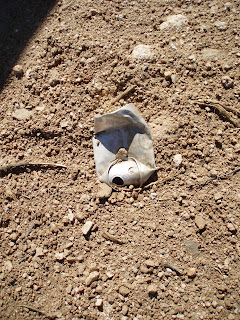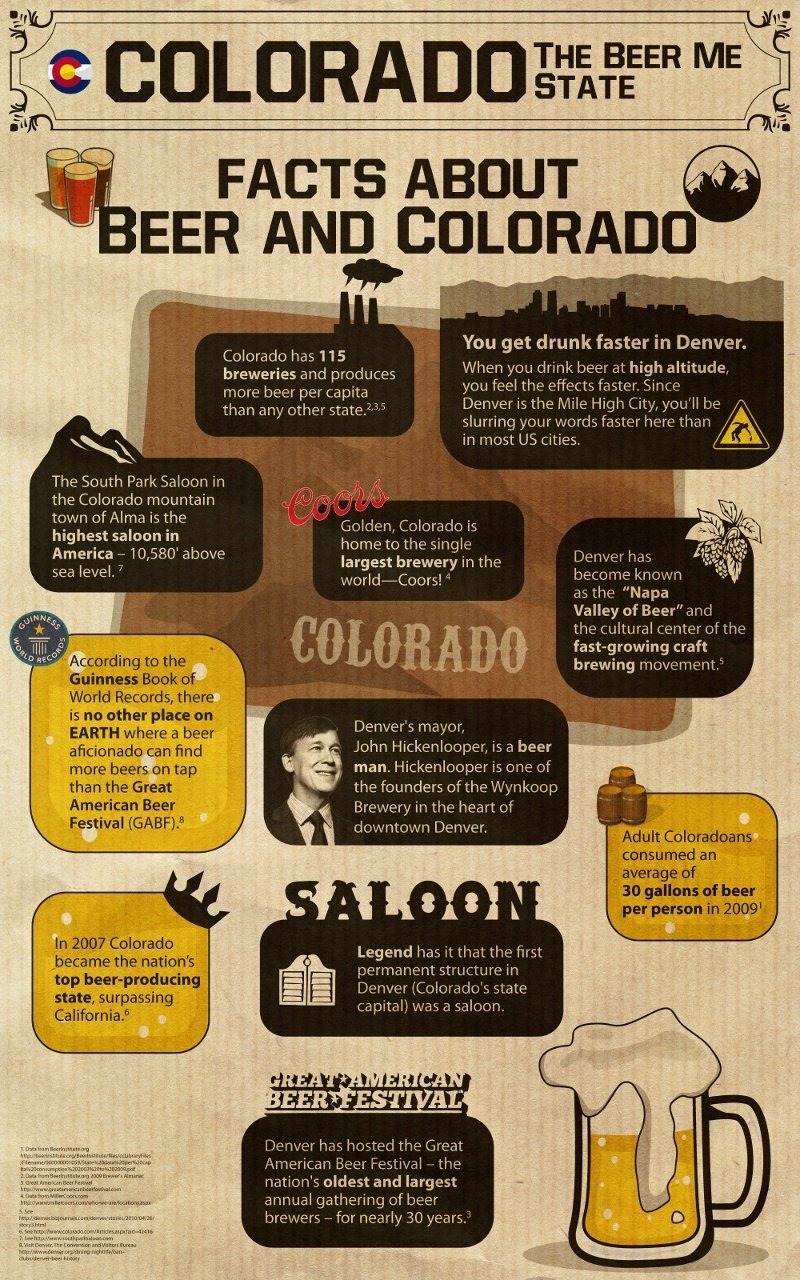
Quick. Can you identify the especially significant feature on this Coors relic found in-situ on a desert tract northeast of Phoenix? It’s an authentic “two-holer” can!
Some of you may recall this short-lived alternative to the old-fashioned pull-tab opener on beer cans. It was doubtless an early response to the kook environmentalism of the 1960s and 1970s that, instead of tackling the big problems of the world (like laziness, draft evasion, and pointless sex with strangers) elected to take on the pull tabs that seemed to be infesting every highway interchange and vacant lot where stood a crying Indian chief. Actually, it’s come to be a pretty good idea, but this first, flustered attempt strikes me as a bit odd.
Mind you, I was not old enough to be drinking beer when these two-holers first made their appearance but I grew up in a tiny mountain town, upstream of the Coors plant in Golden, Colorado and every beer-related novelty went through the community like wildfire. Perhaps because so many folk up there worked at Coors or maybe they were all really tuned in to marketing strategies and packaging innovations. (I’m thinking they were just a bunch of bored drunks, actually.) Anyway, for whatever reason, this two-hole can opening precursor to the current “lift and pop” can tab wasn’t particularly well received by the local hillbilly focus group and I don’t’ think the system lasted more than about a year before it was replaced with something else.
For those of you who don’t remember this packaging innovation, basically what you did was you pushed in on the smaller round opening to release the pressure before pushing in on the larger opening, which was for the drinking.
Some of you may recall this short-lived alternative to the old-fashioned pull-tab opener on beer cans. It was doubtless an early response to the kook environmentalism of the 1960s and 1970s that, instead of tackling the big problems of the world (like laziness, draft evasion, and pointless sex with strangers) elected to take on the pull tabs that seemed to be infesting every highway interchange and vacant lot where stood a crying Indian chief. Actually, it’s come to be a pretty good idea, but this first, flustered attempt strikes me as a bit odd.
Mind you, I was not old enough to be drinking beer when these two-holers first made their appearance but I grew up in a tiny mountain town, upstream of the Coors plant in Golden, Colorado and every beer-related novelty went through the community like wildfire. Perhaps because so many folk up there worked at Coors or maybe they were all really tuned in to marketing strategies and packaging innovations. (I’m thinking they were just a bunch of bored drunks, actually.) Anyway, for whatever reason, this two-hole can opening precursor to the current “lift and pop” can tab wasn’t particularly well received by the local hillbilly focus group and I don’t’ think the system lasted more than about a year before it was replaced with something else.
For those of you who don’t remember this packaging innovation, basically what you did was you pushed in on the smaller round opening to release the pressure before pushing in on the larger opening, which was for the drinking.

I view this Coors relic as just that, an archeological find, with just enough original character for the scholar to place it in its historical context. Sure, a million beer can collecting geeks have these in pristine condition, “un-popped” and on display under Plexiglas. That’s fine. This example is like the 42 Mercury that didn’t get to spend all its winters in a cozy garage, but instead was used to haul cinderblocks and pull tree stumps, with its paint fading slowly all the while. And, just like we need to see authentic 42 Mercury’s to appreciate how things age, we should take a closer look at the beer cans we encounter in nature and pause to consider where they sit in the timeline of beer packaging. In this case, the second thought that comes to mind (after, “cool, there’s a two-holer from the 1970s”) is “Hmm. If your goal is to reduce litter, it doesn’t do much good to design a can without a detachable pull-tab if the whole can ends up being the projectile.”
I’m a bit sorry I didn’t pick up this relic. We’ll just have to be content with a photo or two. Keep looking down. You never know what sort of beer can history is under foot.
Cheers.


No comments:
Post a Comment